“But that’s the challenge — to change the system more than it changes you.”- Michael Pollan
The aroma comes first—earthy, bitter, rich with familiarity—followed by the sound. Maybe it’s the low rumble of bubbles rising in a stovetop pot or the steady whir of a machine on the counter—each noise, no matter its timbre, signaling the same daily ritual. Coffee, for many, is more than just a drink, it’s a rhythm, a ceremony: the clatter of your favorite ceramic mug landing on the countertop, the space we carve out for our espresso machines, frothers, and steamers, or the low murmur of early morning conversations swelling as the mug slowly drains. These sweet associations with coffee and the profound indent it has on our daily routines seem to distract from its classification: a psychoactive substance, belonging in the same category that classifies other substances including heroin, MDMA, cocaine, cannabis, and nicotine.
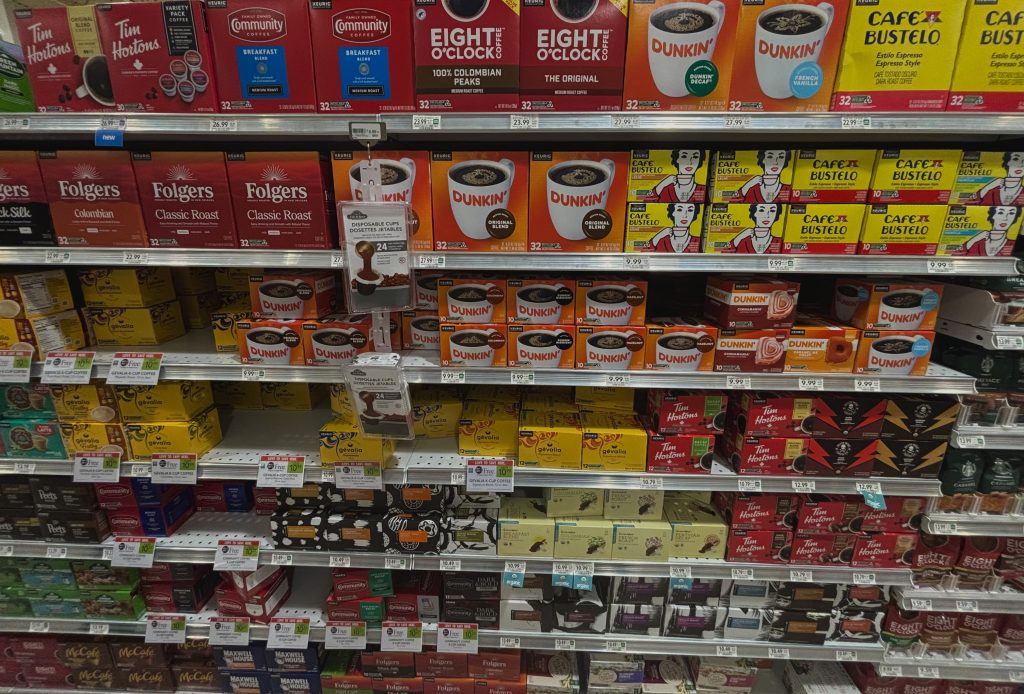
The Chemical Conversation
While coffee itself isn’t classified as a stimulant, caffeine—the stimulant found in tea leaves, coffee beans, and chocolate—is, and it’s one of the most widely consumed legal stimulants. Caffeine belongs to the methylxanthine class of alkaloids, which are organic compounds that create stimulant effects.
Methylxanthines have a unique relationship with adenosine, a chemical in the brain that helps regulate energy levels and relaxation. From the moment you wake up, your brain starts accumulating adenosine, influenced by activities like moving, thinking, and talking. As the day forages on, adenosine continues to build up, making you feel more tired and signaling the need for sleep.
Think of methylxanthines as hijackers: they latch onto adenosine receptors, blocking the natural effect of adenosine in the brain. This prevents feelings of fatigue and makes you feel more awake, while distorting your perception of time. Additionally, caffeine has been shown to induce dopamine release—the chemical associated with pleasure—contributing to the mental and physical “uplift” many people feel with that first cup of coffee.
These positive aspects of caffeine, the burst of energy so many experience and the mental and physical uplift that comes alongside, are well-documented, contributing to how caffeine has been able to become such a cornerstone of so many people’s daily routines. But as Buddha’s Middle Path reminds us, even the most beneficial things, when overindulged in, can become detrimental.
There is no denying the impact caffeine can have before a night’s sleep, with many finding that an afternoon espresso or a Celsius too close to bedtime can delay falling asleep. Moreover, researchers find that some people may need to limit their caffeine intake up to 11 hours before bedtime.
A research article published in the Journal Of Sleep Medicine states, “Due to the high variability in the elimination half-life of caffeine administered to healthy adults, specific recommendations on what time of day to discontinue caffeine use vary widely from four to 11 hours prior to bedtime.”
The impact of caffeine varies significantly from person to person; the same espresso that might have your friend asleep an hour later could keep you wired throughout the night.
Discover Magazine explains, “Genetic variation in adenosine receptors can also impact caffeine signaling in the brain. These variations can alter their function, in turn affecting a person’s sensitivity to caffeine’s effects—leaving some either highly resistant or sensitive.”
Additionally, an article titled “Caffeine for the Sustainment of Mental Task Performance: Formulations for Military Operations” states, “This wide range in the plasma mean half-life of caffeine is due to both innate individual variation and a variety of physiological and environmental characteristics that influence caffeine metabolism (e.g., pregnancy, obesity, use of oral contraceptives, smoking, altitude).”
In other words, much like other psychoactive substances, caffeine’s effects are highly individualized and subjective. A complex interplay of genetic and environmental factors influences both its physiological and psychological impacts—as well as the likelihood of dependence.
On the Grind: Caffeine at Rollins
Caffeine, in all its many forms—ranging from energy drinks and matcha lattes to espresso shots and pre-workout powders—has its devoted supporters. Just about everyone seems eager to share their new favorite Celsius flavor or coffee creamer of choice. For me personally, it’s been an Americano, made with coconut water, and a splash of creamer.
Among these supporters, with just about every age, culture, and nationality represented, are college students. An anonymous survey gauging caffeine consumption, perception, and impact was sent out to the Rollins community. 108 responses were recorded.
Approximately 90.7 percent of the responders confirmed that they do consume caffeine. 48.1 percent said that their primary source of caffeine was coffee, 17.6 percent said energy drinks, and 15.7 percent said tea.
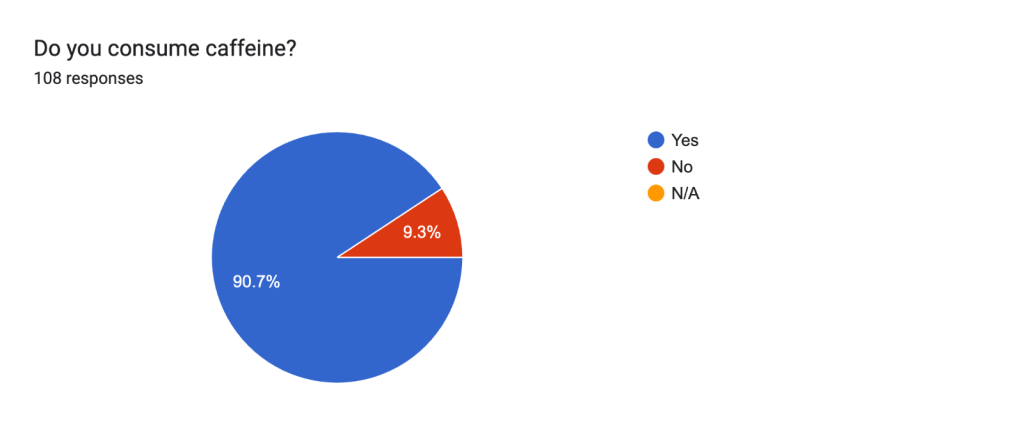
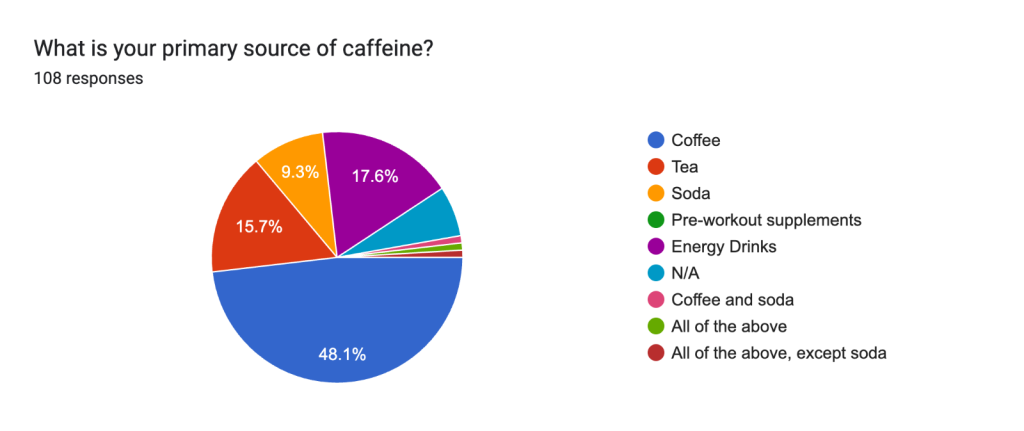
When asked how often they consume caffeine, 51.9 percent of respondents said daily. When asked how much, 43.5 percent said between 100 to 200 mgs, 25.9 percent said less than 100 mgs, and 19.4 percent said anywhere from 200 to 400 mgs.
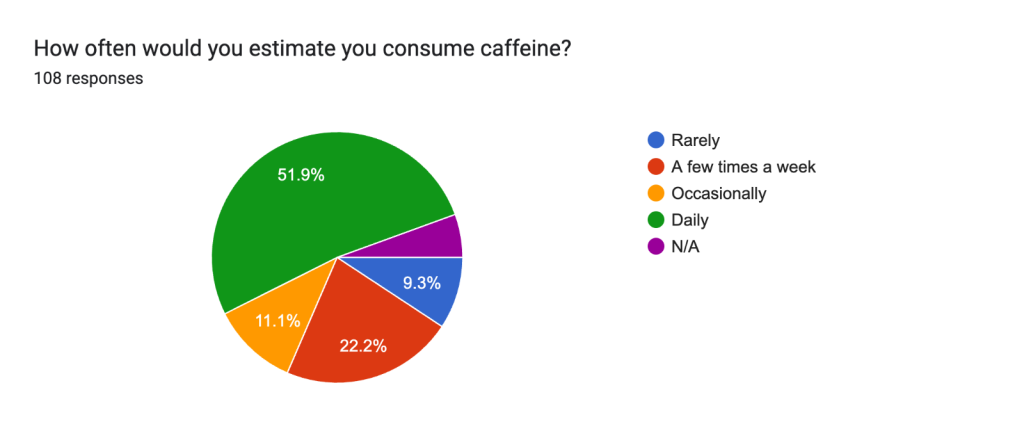

When asked about caffeine’s role in staying awake for school-related tasks, a majority of 71.3 percent answered that they use caffeine to help with studying or staying awake for school related tasks. Despite this, when asked if they had ever pulled an all-nighter with the help of caffeine, 56.6 percent voted no.
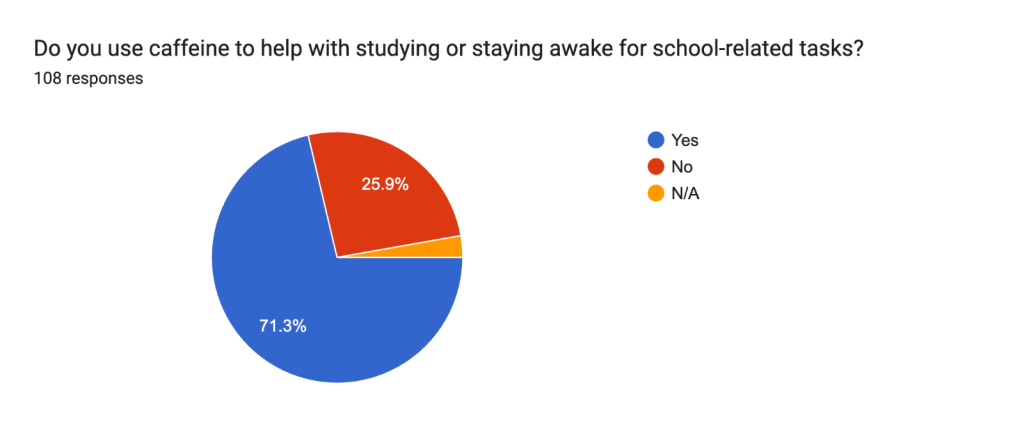
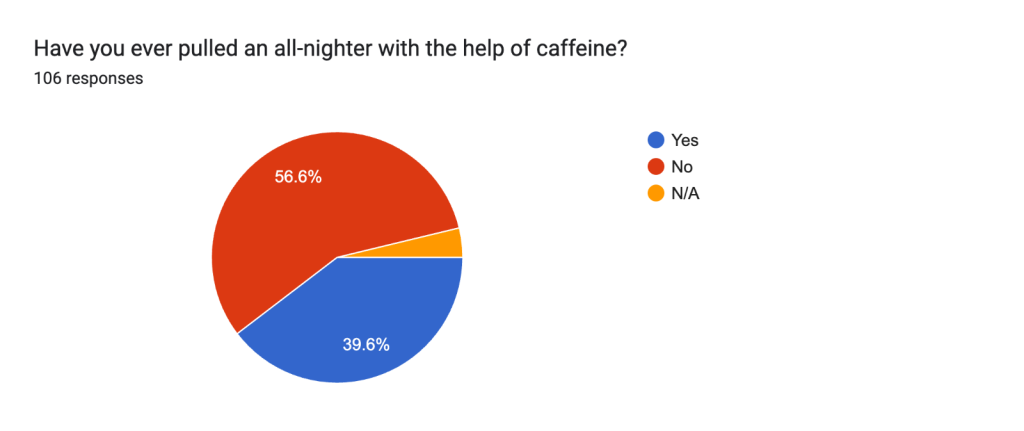
Caffeine culture is as deeply embedded in college life as it is in cultures around the world. In Ethiopia, where the coffee plant was first domesticated, traditional coffee ceremonies transform raw beans into a rich, spiced drink. In Italy, coffee culture is so strong that during World War II, American soldiers had to water it down, giving rise to the beloved Americano. In higher education, students pack into coffee shops with laptops and headphones, while others clutch half-empty Monster cans in their 8 a.m. classes. Caffeine fuels students through assignments and exams, late-night hangouts, and early-morning classes.
There is no denying the foundation of caffeine in our daily lives and the way it’s woven its way throughout human existence. Yet, the habitual, often mindless consumption of caffeine—paired with little recognition of its classification as a psychoactive substance—treads a dangerous, potentially fatal line.
The Sleep Dilemma
A study conducted on the effect of caffeine on sleep concluded that, “Specifically, caffeine consumption reduced total sleep time by 45 min, increased sleep onset latency by nine min, and increased wake after sleep onset by 12 min. These changes were accompanied by a seven percent reduction in sleep efficiency.” Additionally, relying on caffeine to feel alert in the morning can mask indications of poor sleep quality, making people unaware of their symptoms.
Navigating sleep in a world as demanding as the one we experience today is difficult, seemingly almost impossible. For college students especially, sacrificing sleep seems like the only way to finish every assignment, attend every event, and experience every party. These struggles do not diminish the reality that finding the time for quality sleep is crucial and becomes more impactful in our health as we age.
Dr. Maiken Nedergaard, who studies sleep at the University of Rochester, said, “When we sleep, the brain totally changes function. It becomes almost like a kidney, removing waste from the system.”
An article published by the School of Public Health at The University of Michigan states that “Chronic exposure to poor sleep quality is associated with depression, anxiety, and other conditions.”
These findings don’t mean that everyone needs to give up their favorite coffee beans or energy drinks. Even as I write this article, my coconut water Americano pokes its way into my peripheral. These studies on caffeine’s impact do not disprove the cultural cornerstone that caffeine has been throughout human history.
To tell those in Ethiopia to stop their Habesha coffee ceremonies because their sleep is being impacted, or to tell my family back in Serbia that the coffee rings that line their mugs are contributing to their anxiety, feels misguided and unfair. Instead of demonizing caffeine and ignoring all of its cultural and positive impacts, there simply needs to be more transparency and individualized approaches to caffeine consumption.
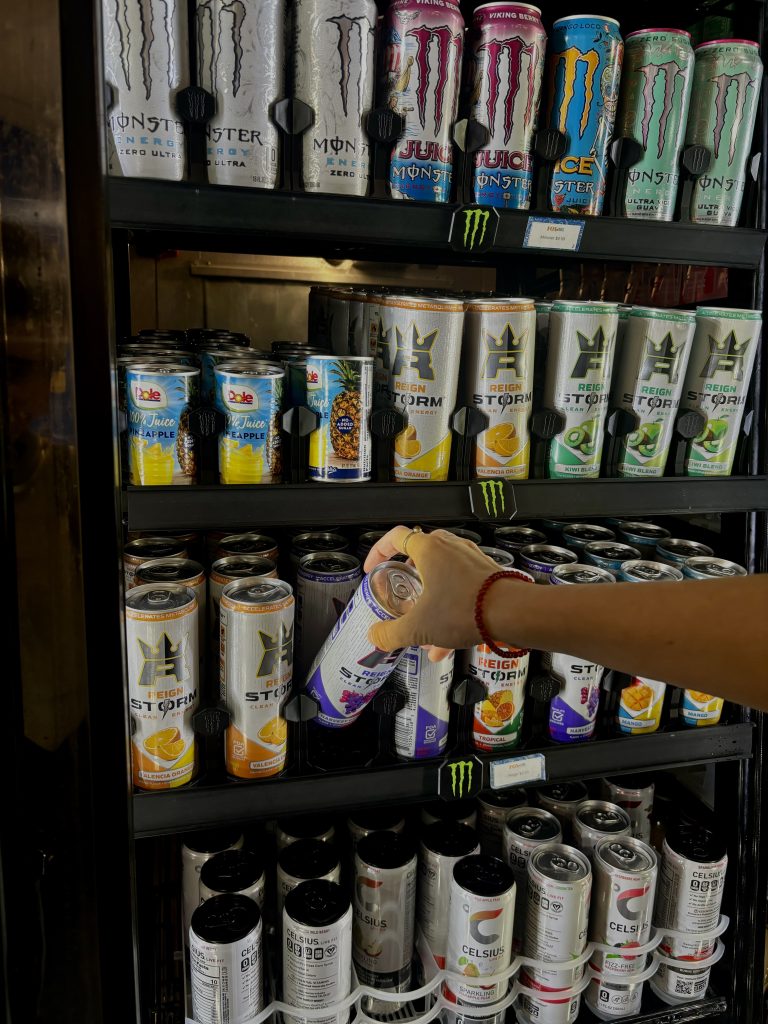
Reckless Representation: Victims of Caffeine
Take, for example, the lawsuit in 2024 filed by the parents of Sarah Katz, a 21-year-old University of Pennsylvania student who was a research assistant in a children’s hospital and taught CPR to underprivileged communities.
Sarah, who had an underlying heart condition and avoided energy drinks at all costs, died after consuming Panera’s charged lemonade, which contains more caffeine than Red Bull and Monster energy drinks combined.
The charged lemonade was, at the time, conveniently placed next to all the other soft drinks and non-caffeinated items, allowing customers to serve themselves refills of a beverage that had 390 milligrams per serving. Panera has since discontinued their charged lemonade products.
Sarah’s caution regarding her heart condition and diligence to her own health was undermined by a company’s negligent placing and misrepresentation of a product that led to her death.
In March 2025, Florida teacher Katie Donnoll died from a heart attack at the age of 28. Donnoll was described as a “work out queen,” with a New York Post article stating, “she ate real clean, she ate organic food, she was the epitome of health other than [having energy drinks].”
The article describes Katie’s commitment to caffeine to fuel her active lifestyle saying, “she often drank three energy drinks a day and took a caffeine supplement before hitting the gym.”
After suffering a heart attack and ten days in a coma with worsening seizures, Katie’s family made the devastating decision to take her off life support.
Both women—beloved by their communities, friends, and families—were victims of caffeine’s potential dangers, fueled by misrepresentation and a lack of accessible information.
Understanding caffeine’s role in our lives, the impact on our health, and the safeguards that are necessary to be put in place require detective work, just like pretty much everything else in our food system.
While a shot of espresso in the morning and a Celsius before gym may seem moderate, adding the espresso’s 100 milligrams of caffeine to the Celsius’ 200 mgs is unbelievably close to the FDA’s recommended maximum of 400 mgs a day.
Becoming Your Own Detective
Advocating for greater transparency and a deeper understanding of caffeine’s role in our lives is crucial, not to create fear or limit what we enjoy for the sake of health but to empower us with the knowledge to understand what moderation looks like for each individual and to take control of our own well-being. Caffeine, deeply woven into the fabric of culture—from college campuses to global traditions—should be consumed with awareness, not avoidance. By acknowledging the complexity of its effects, we can make more informed choices, balancing its benefits and risks.
It’s not about demonizing caffeine but recognizing its place in our lives.
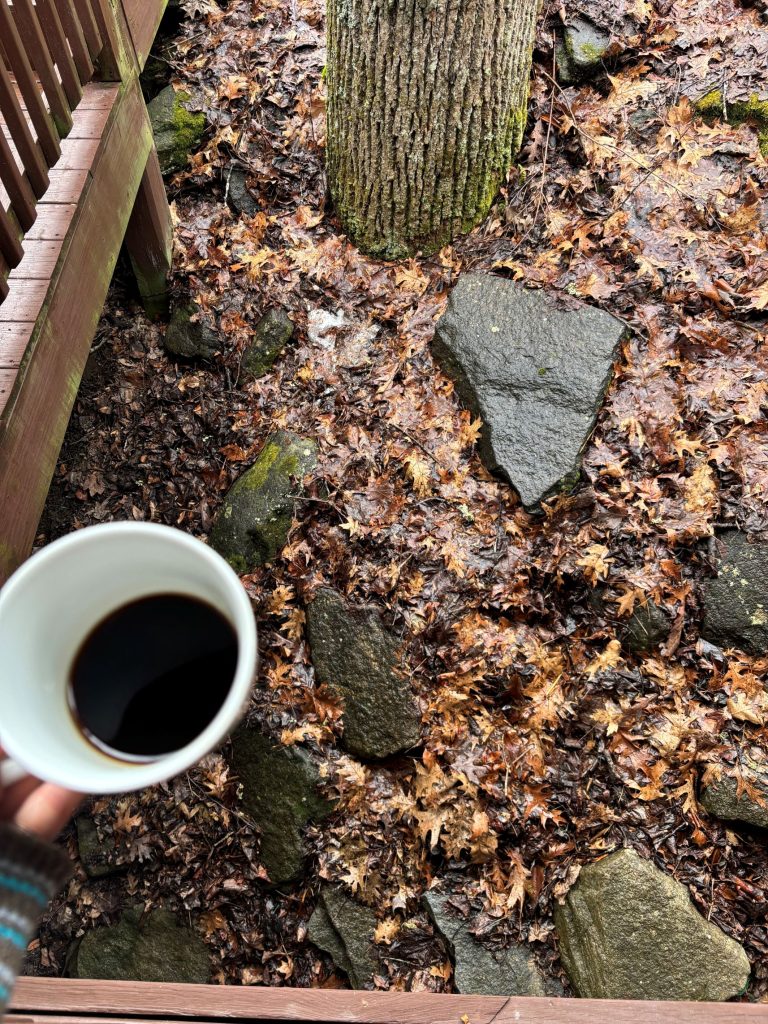
The opinions on this page do not necessarily reflect those of The Sandspur or Rollins College. Have any additional tips or opinions? Send us your response. We want to hear your voice.

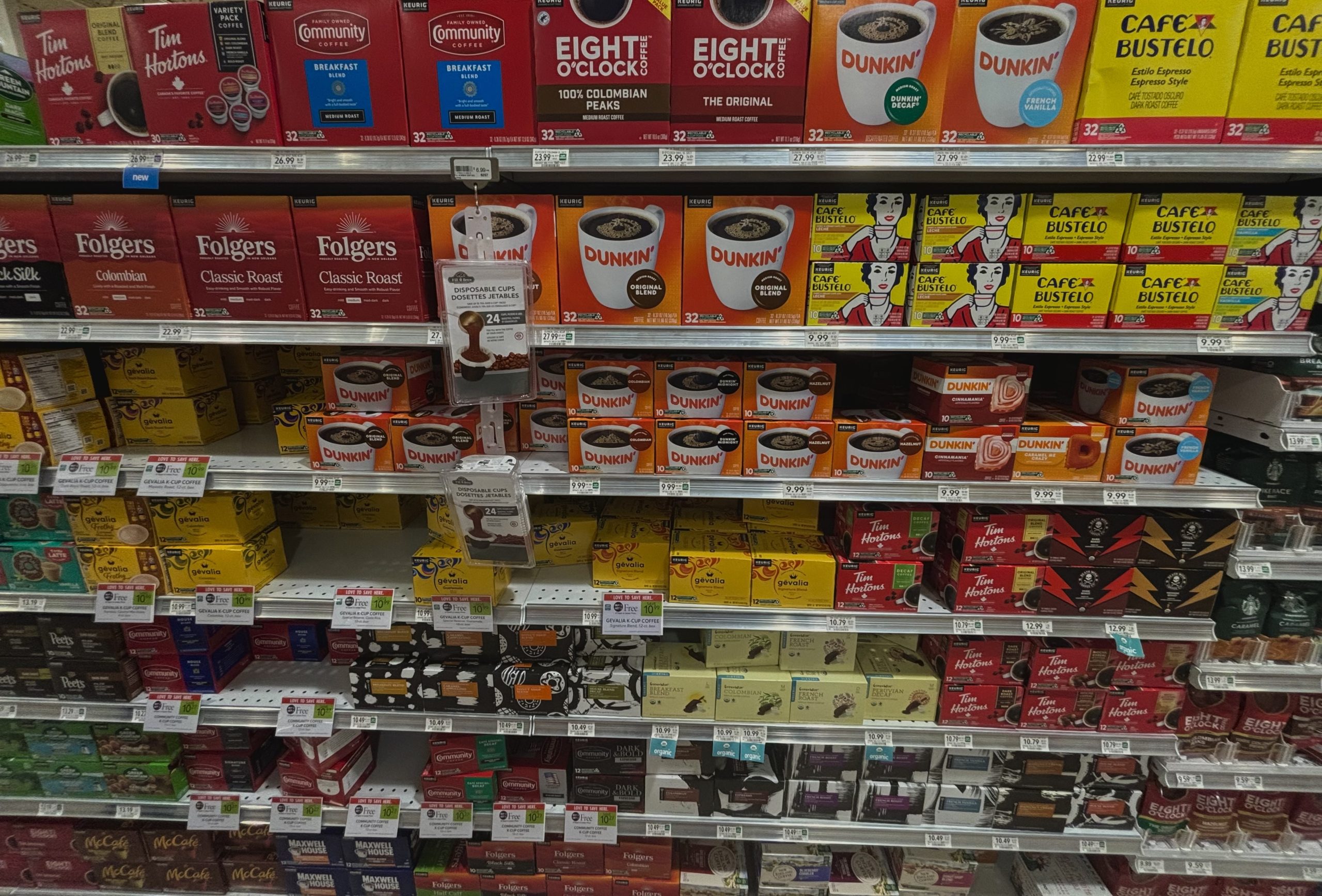





Comments are closed.